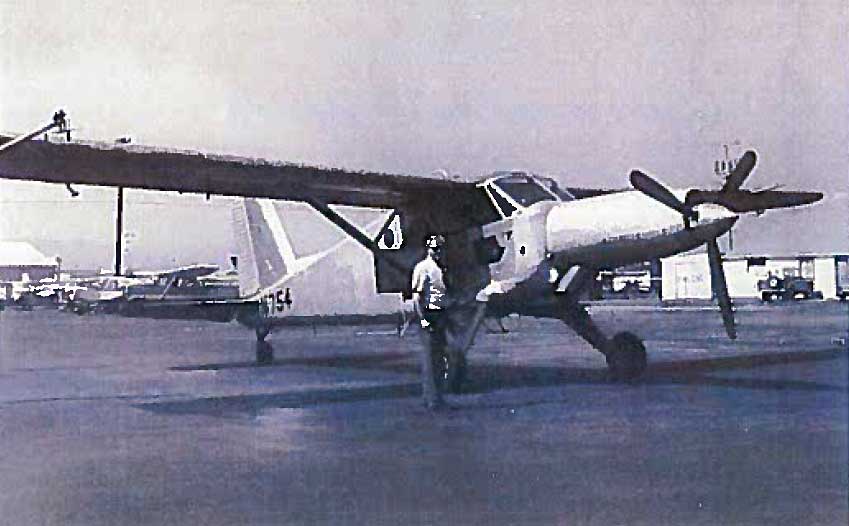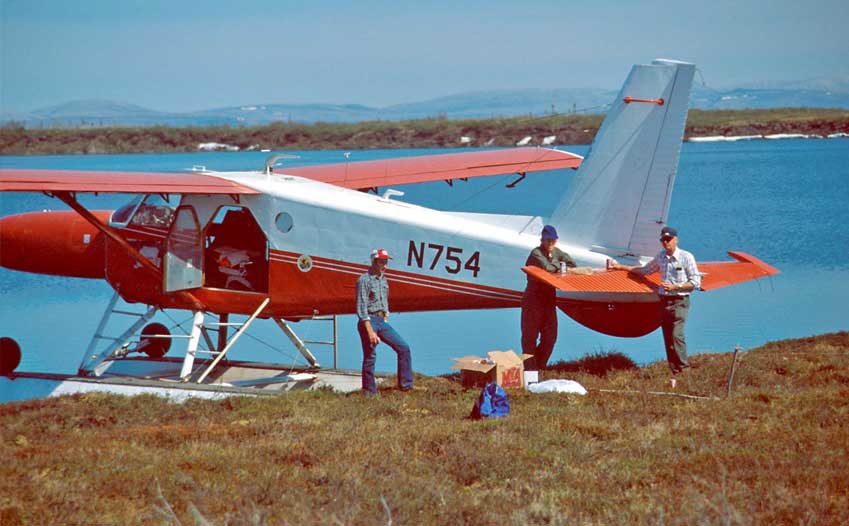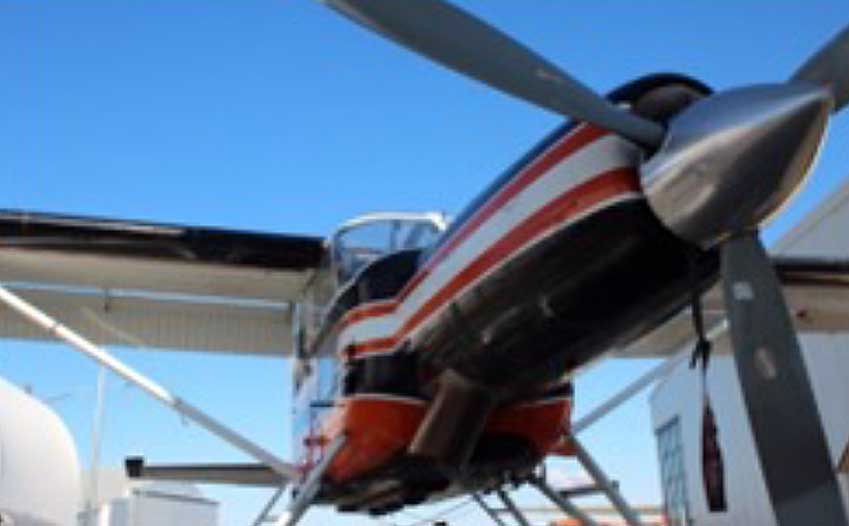N754 History and Modifications
What kind of plane is this?
N754 is a specially modified deHavilland Beaver aircraft with a Garrett turbine engine and numerous other modifications to improve performance, visibility, and safety, all of which made it an excellent survey platform for aerial surveys. N754 started out as a standard piston powered deHavilland Beaver built in 1952 and it flew military missions in Cuba. Its transformation into something extraordinary began when the Service acquired it as military surplus in 1964. It was highly modified by the Alaska U.S. Fish and Wildlife Service Aviation Division for efficiency and safety in conducting low level surveys of migratory birds.
The experienced pilots and many observers who flew in N754 agree that it was the best overall and safest aircraft for completing this varied and challenging task. Other aircraft can and have filled this role, but it only took one flight in N754 to appreciate the difference between N754 and other aircraft in meeting this challenge.
A timeline of the use, ownership, and significant modifications of N754
1952: Manufactured (MSN 404/1207) by deHavilland Aircraft Company, Canada, as a piston powered “Beaver”; delivered to the U.S. Air Force Nov 12, 1952 as L-20A Beaver, a DHC-2 Beaver.
1958: Beaver #1207 delivered to Cuban Air Force as FAEC-29 on June 19, 1958. Sometime before 1964, it was transferred back to the U.S. Military.
1964: Former Beaver FAEC-29 transferred by the U.S. Army as a U-6A to the U.S. Fish and Wildlife Service in Portland, OR and flown to Alaska and reserved for turbine conversion.
1968: N754 registered April 5, 1968 to U.S. Department of the Interior.
1968-1972: N754 flown to Van Nuys, CA and converted to Volpar 4000 with Garrett turbine engine, and numerous other modifications (see History of N754 for further details on modifications made at that time).
1972: N754 flown to look at new FWS National Wildlife Refuge proposals for Alaska.
1973-1976: N754 out of service at Office of Aircraft Services in Anchorage, Alaska.
1977: N754 put back in service, with more modifications, put on amphibious floats and used to fly the 1977/1978 USFWS Alaska spring breeding waterfowl surveys. Flown on wheel skies in winters.
1979: N754 officially assigned to the USFWS Juneau Waterfowl Project and kept on amphibious floats.
1992: The EDO Bristol 4580 amphibious floats were converted to EDO 4930 for better flotation. Installed by Seaflight Industries Inc. in Richmond, British Columbia.
1998-1999: Refurbished by Viking Air, Ltd., Victoria, British Columbia; added Viking modifications, redesigned the front panel with addition of small custom computers for bird survey work, and had the amphib floats widened by Sealand Aviation, Ltd. for greater flotation at high gross weights (see History of N754 for further details on numerous modifications made at that time).
2011: N754 retired from service fall of 2011 and donated to Alaska Aviation Museum; registration cancelled March 19, 2013.
2017: N754 dismantled, then re-assembled and hung for display in Ted Stevens International Airport Terminal in Anchorage, Alaska, above Norton Sound Seafoods.
- A History of N754 [PDF] (transcript of interviews and notes from pilots and mechanics who flew and oversaw the evolution of this interesting and unique aircraft)
Special features of N754 that make it such an effective tool for bird surveys include:
- Turbine powered by a Garrett TPE-331-2 engine for long life and performance near rugged terrain.
- Front doors were eliminated to strengthen engine mounts and to accommodate large side windows with narrow transition posts for enhanced wildlife viewing.
- Direct drive for engine response and reversible propeller for driving flightless birds to traps for banding.
- Custom, long range wing fuel tanks for survey missions in remote ‘bush’ locations with up to seven hours of endurance.
- Simple, easy to manage fuel system.
- Relatively slow stall speed for safe slow speed operations.
- Custom, widened amphibious floats needed for higher weight operations on the water.
- Rugged amphibious landing gear with good soft field capabilities.
- Panel mounted computers with custom moving map software (unique in aircraft at the time).
- Custom computer software to accurately capture GPS waterfowl locations.
- Simplified, organized flight controls and instrumentation to reduce burden on pilots during long low-level surveys.
N754 Onboard Computers – Long before moving map software was available in general aviation aircraft, N754 pilot Jack Hodges developed a custom system in 1998 for Navigation and Data Recording. Hear Jack describe it here.


